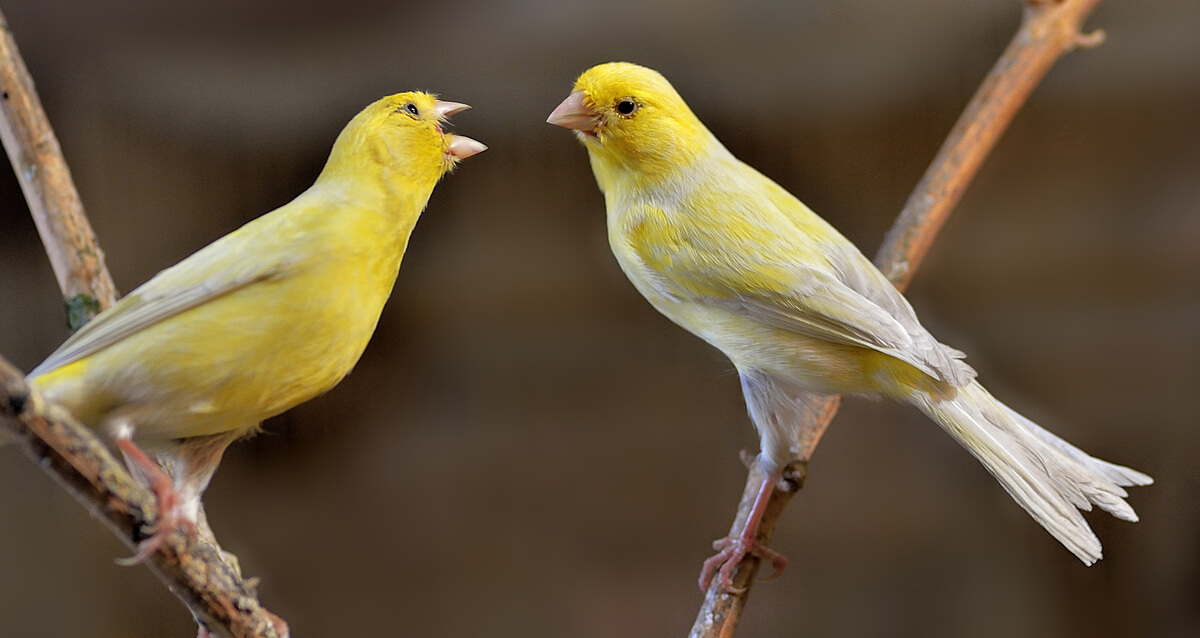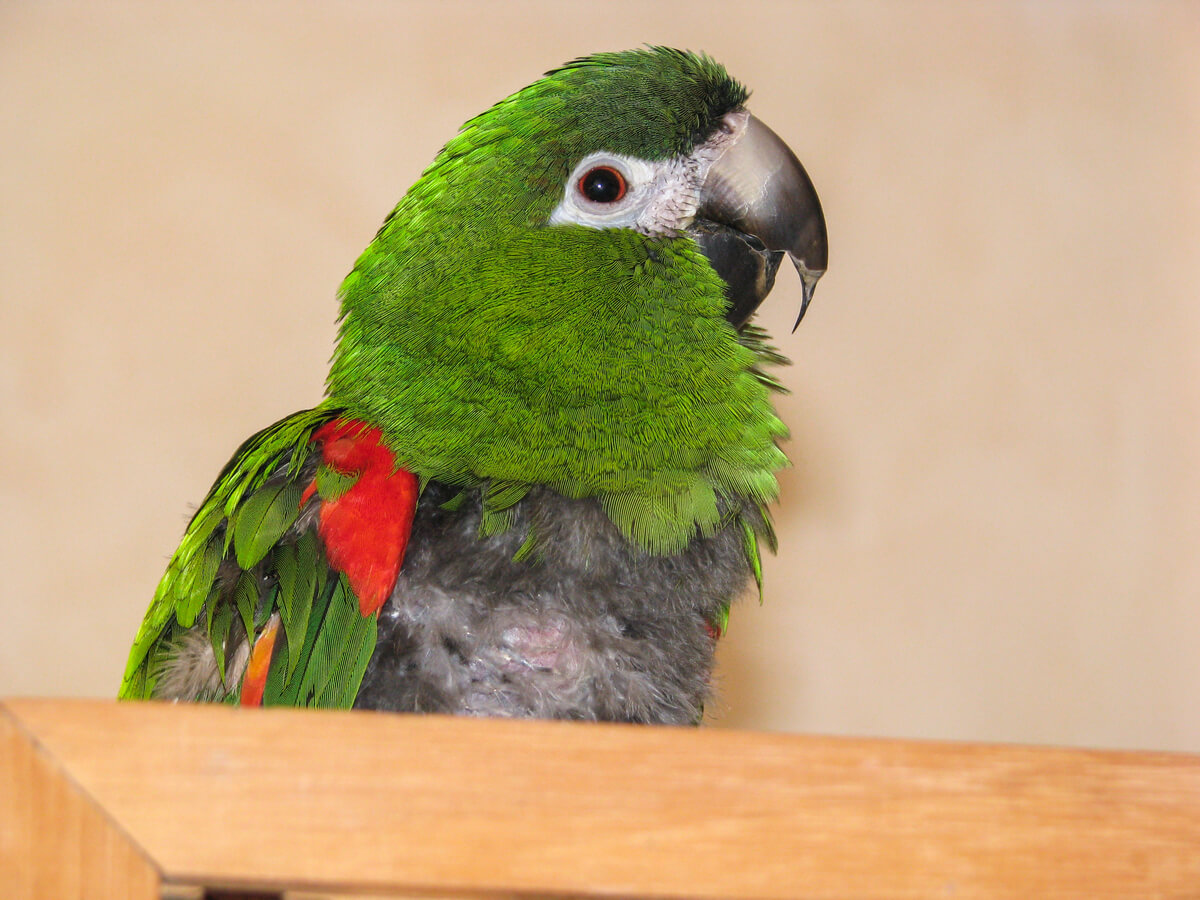5 Signs Your Bird Is Happy

Understanding domestic birds is not an easy task for every first-time owner. These animals lack the voluntary facial musculature of mammals, and so their emotional states and signs are much more cryptic to us than those of a cat or a dog, for example. Would you like to know 5 signs that show your bird is happy?
When a mammal shows its teeth we know that it’s going to attack, while a bristling of the hairs (piloerection) is usually a sign of fear and surprise. But how do birds show these universal emotions? Can they feel joy and happiness like an ape, a dog, or a cat? Here we’ll answer these questions and many more.
Signs that your bird is happy
Although many owners may not be aware of it, almost all domestic birds are exceptionally intelligent. Psittacines (parrots, macaws, parakeets, magpies, and cockatoos) stand out from the rest in this area, as they’re capable of self-recognition, solving problems, developing language patterns, and forming very strong social relationships, among other things.
Here are 5 signs that your bird is happy. Of course, we’re only going to look at the most common domestic species that you find in homes: the canary (Serinus canaria domestica), the parakeet (Melopsittacus undulatus), and some parrots and cockatiels in general. Don’t miss it!
1. Signs that your bird is happy: the bird sings
Although Psittacidae birds emit a wide range of vocalizations, the kings of song in the domestic sphere are canaries (belonging to the Passeriformes order). Males sing for most of the year and this behavior is modulated by hormonal circuits, but when they get sick or fall into depression they stop doing it.
In the case of canaries, singing is the first sign that the animal is happy and at ease. However, these birds usually stop emitting tones for a couple of months in the summer, as, at this time, they’re molting, and need to invest their energy in this process.

2. Seeking your company
While canaries and other domestic passerines don’t show attachment to their guardians, parrots do enjoy socializing with humans. It’s normal for parrots and nymphs to climb on their guardian’s head, snuggle on his neck, rub their hands, or carry objects to attract attention.
Due to their need for socializing, it’s recommended that you keep parakeets and other small parrots with a companion in the cage. As this isn’t possible with large parrots and cockatoos, you must take special care that the animal doesn’t fall into depression and begin to harm itself. For this reason, the owner must adopt the role of their life companion and not let their bird feel alone.
Another sign of a happy bird is that it seeks out its guardian.
3. It grooms itself
More than a sign that your bird is happy, grooming is a sign of lack of stress and a feeling of safety in the environment. Birds have a structure known as the uropygial gland near the base of the tail, whose function is to secrete oily substances that waterproof and repair the structure of the feathers.
If your bird feels comfortable, you’ll see how sooner or later it begins to use its beak on its back to spread the fluid produced by the gland on its feathers. Grooming leaves the bird exposed to predators, so if they do it, it’s a sign that your bird is happy, relaxed, and confident in its environment.
4. Imitation of words
As you can imagine, this behavior is reserved for parrots, parakeets and nymphs, as canaries, Mandarin diamonds and other passerine birds are incapable of imitating sounds of human nature. This isn’t just a matter of intelligence, but of the arrangement of the syrinx and other physiological limitations.
Be that as it may, a parrot or parakeet that’s happy and stimulated will spend part of its time learning words and imitating them for entertainment. This is a sign that they’re mentally and physically healthy, but it shouldn’t concern the owner if they don’t do it either. It may have just gotten bored with the learning process and need other kinds of games.
5. Lays eggs
The females of many species of birds lay eggs regardless of whether they’re fertilized or not. This is a sign that your bird is happy and comfortable, but you shouldn’t encourage it either. Each oviposition is a very demanding process for a bird and involves a depletion of calcium and nutrients, so it’s best to take her to the vet if you don’t her to do this and discuss ways to prevent it.
Sometimes the eggs can get stuck in the cloaca and kill the mother. This scenario must be avoided.
Signs that a bird is unhappy
We have told you about the signs of happiness in a bird, but there are also many others that indicate discontent and illness. Some of the most important are the following:
- Constant fluffing of feathers: Birds fluff their feathers from time to time to thermoregulate and groom themselves. However, if this behavior is constant, an underlying disease should be suspected.
- Stopping singing: Especially in canaries, if males stop singing outside the molting season, it almost always means they’re stressed or have some sort of physical illness.
- Feather shedding: Parrots that are depressed or stressed tend to self-injure, pulling feathers out of their chest area. If you see that your parrot or parakeet has feathers on its head (because it can’t reach them), but none or hardly any on the rest of its body, it’s likely that it has a behavioral problem.
- Rales and coughs: Sick birds usually emit strange noises when trying to clear their respiratory system. These resemble coughs or choking sounds in humans.
These symptoms indicate not only a feeling of discontent in your bird, but an underlying psychological or physical illness. All of them merit an urgent visit to the vet.

As you can see, a bird shows many specific signs when it’s happy and relaxed. Learning to read their body language is a necessity, because even though they don’t express things like we do, birds have complex feelings and mental processes that we must respect. It’s our obligation as guardians to keep the pet happy until the end of its days.
All cited sources were thoroughly reviewed by our team to ensure their quality, reliability, currency, and validity. The bibliography of this article was considered reliable and of academic or scientific accuracy.
- Frankl-Vilches, C., Kuhl, H., Werber, M., Klages, S., Kerick, M., Bakker, A., … & Gahr, M. (2015). Using the canary genome to decipher the evolution of hormone-sensitive gene regulation in seasonal singing birds. Genome Biology, 16(1), 1-25.
- Eberhard, J. R. (1998). Breeding biology of the Monk Parakeet. The Wilson Bulletin, 463-473.
- Dooling, R. J., & Saunders, J. C. (1975). Hearing in the parakeet (Melopsittacus undulatus): absolute thresholds, critical ratios, frequency difference limens, and vocalizations. Journal of Comparative and Physiological Psychology, 88(1), 1.
This text is provided for informational purposes only and does not replace consultation with a professional. If in doubt, consult your specialist.